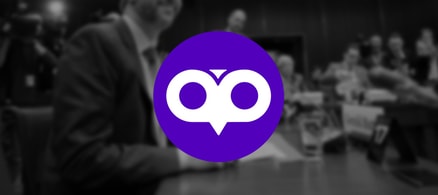Debt definition
Before we dive into how to get out of debt, let’s agree on a debt definition. According to Investopedia, debt is an amount of money borrowed by one party to another. Here are some examples of debt:
- Mortgages
- Student loans
- Personal loans
- Payday loans
- Lines of credit
- Home equity lines of credit
- Credit cards (including department store cards)
- Car loans
- Furniture financing
- Unpaid bills
Some Canadians don’t consider their mortgages, car loans, or student loans to be forms of debt, which is incorrect. While some types of debt are certainly more urgent than others, it’s all debt, even your mortgage.
Different types of debt
I mentioned above that different debts have different levels of urgency. This urgency is related to how much your debt is costing you per month, which is determined by your debt’s interest rate. Your debt’s interest rate is the amount your lender charges, usually expressed as a percentage of the total loan amount (or principal). Your debt’s interest rate could be as low as a few percentage points, or as high as hundreds of percentage points. It depends on the debt.
Most debt interest rates fall into one of the following categories:
High-interest debt
High-interest debt is debt with an interest rate in the double digits. Financial products with interest rates this high can easily cost you hundreds of dollars per month, even if you are carrying a relatively small balance. These debts should be your top priority when getting out of debt because they cost so much to service. Examples of high-interest debt include:
- Standard credit cards (usually about 19.99%)
- Payday loans (>500%)
When I say these debts will cost you hundreds in interest, I mean it. For example, if you carry $5,000 on your credit card at 19.99% interest, and you only make the minimum monthly payments on that debt, it will take you 20 years to pay off that debt, and you’ll pay $5,983 in interest. Yikes.
Medium-interest debt
Medium-interest debts have interest rates in the range of 5 – 15% and should be your second priority to pay off, after credit cards and payday loans. Examples of medium-interest debt might include:
- Car loans
- Student loans
- Lines of credits
Despite generally having lower interest rates than high-interest debts, these debts can actually be harder to pay off because the balances are typically higher and require more months of sustained effort. It’s still worth paying off these debts because making only minimum payments will cost you thousands of dollars in interest over time. For example, if you graduate with a $25,000 student loan at an interest rate of 6.75% and a loan term of 10 years, you’ll pay an extra $9,447 in interest.
Low-interest debt
Low-interest debt should be your lowest priority to pay off, and in some cases, if the interest rate is low enough, it makes more sense to prioritize saving and investing instead. An example of a low-interest debt is a mortgage. Mortgage interest rates in Canada were at an all-time low just a few years ago, and while rates have climbed a little recently, many Canadians have mortgages at interest rates lower than the yield on a high-interest savings account. While these debts are still debt and must be paid off eventually, they are the lowest priority on the debt urgency scale.
For example, I have a five-year fixed rate mortgage with an interest rate of 2.29%. I could tackle this debt by directing all my financial resources toward its repayment, or I could invest that money in a high-interest savings account earning 2.30% or Guaranteed Investment Certificate earning 3.00%. In both scenarios, I would earn more interest on my money if I saved it than I would save if I used it to pay down my mortgage.
Strategies to get out of debt
The math behind getting out of debt is simple, and it starts with a budget. You’ll need to create a budget that starts with your income and subtracts your monthly expenses like rent, groceries, and car payments. Whatever is left over should go toward paying off your debt. You can direct more money toward your debt by earning a raise at work, starting a side hustle, or cutting your expenses. Any bonus money you earn like income tax refunds or birthday money should also go toward your debt.
That’s the math side of things. The psychological side is another story. Living on a restrictive budget for an extended period can be mentally draining, which is why it’s important that you attack your debts with a strategy that, when executed, keeps you motivated until that final dollar is paid off.
Here are two primary strategies for debt repayment that are designed to keep you motivated throughout your debt repayment period.
Debt snowball method
The debt snowball method requires you to order your debts from the smallest balance (or principal) to the largest, and to pay them off in that order. For example, pretend you have the following debts:
- Debt #1: Student loan at 6.75% interest ($3,000)
- Debt #2: Credit card at 19.99% interest ($5,000)
- Debt #3: Car loan at 2.9% interest ($10,000)
Per the snowball method you would pay them off in the order they’re listed above.
The debt snowball was popularized by Dave Ramsey and sets you up for quick wins by tackling the smallest debt first. The idea is that you’ll gain confidence and momentum by succeeding in knocking out those smaller debts, which allows you to tackle your bigger debts with enthusiasm.
Interest rate method
The interest rate method, on the other hand, requires you to order your debts from the highest interest rate to the lowest. This way you’ll be tackling the debt that is costing you the most on a day to day basis. You may not get the immediate gratification of paying off and closing accounts right away, but your overall time to debt freedom will be shorter. If you use this method, the debts outlined above would be paid off in the following order:
- Debt #2: Credit card at 19.99% interest ($5,000)
- Debt #1: Student loan at 6.75% interest ($3,000)
- Debt #3: Car loan at 2.9% interest ($10,000)
Which method you use to tackle your debts ultimately depends on your personality. If sheer numbers matter the most to you, and you want to be sure you are maximizing every dollar you allocate toward your debt, pick the interest rate method. If you relish the idea of quickly paying off and closing your smaller accounts, i.e. if you’re the type that looks at a long ‘To-Do’ list and feels gratification and stress relief from checking items off it, the snowball method might suit you well.
Where to find debt relief in Canada
If your overall debt load is too much to handle, and you need some debt help, you have several options for debt relief in Canada that won’t immediately impact your credit score.
Negotiate with creditors
The first thing to do is call your lenders and explain the situation to them. Ask them if they can give you any relief on your loans, whether that is lowering your interest rate or forgiving some of your balance. Your success rate with this negotiation tactic may vary from one creditor to the next, but it’s worth a try.
Try debt consolidation
Debt consolidation is sometimes referred to as refinancing and is usually offered through a bank or financial institution. This strategy allows you to lower your debt interest rates and combine all or most of your debts into a single monthly payment.
If you have high-interest debt like credit card debt, consider a promotional balance transfer offer to reduce your interest rate to as close to 0% as possible. Make sure you only transfer an amount that you are confident you can pay off during that promotional period, as interest rates on your newly consolidated debts will increase after the promotional period ends. Another approach is to consolidate debts into a large, low-interest loan.
If you need one place to go to compare loans and find the best debt consolidation loan suited to your needs, you’ll want to try Loans Canada.
A caveat with this strategy is the risk that history will repeat itself. If you transfer your high-interest credit card debt to a consolidation loan or balance transfer card, you must diligently work to pay your consolidated debt off and avoid running up new debts. Otherwise, you’ll be in a worse position overall.
More: Should I use a loan to pay off my credit card debt?
Seek outside assistance
If you have provincial student loans, most provinces offer debt help by forgiving some of your loan or by allowing you to make interest-only payments while you pay off your other higher interest debts.
If you’ve been struggling with consumer debt for years without making progress, credit counselling might be a good resource for you. Also referred to as a debt management plan, credit counselling is offered by several registered charities throughout Canada. These charities can also be excellent sources for debt advice, even if you don’t end up using their services. Credit counselling entails drawing up a voluntary agreement between you and your creditors to pay back 100% of your debts, plus an administrative fee to the charity. The charity, in turn, provides you with the counselling you need to pay off your debts once and for all. Credit counselling negatively impacts your credit report, so only pursue this avenue if you need to.
Finally, there are more drastic debt relief options, like a consumer proposal or bankruptcy. You should consider these a last resort because, like credit counselling, these options will have a negative impact on your credit score for years.
For many Canadians, debt is a way of life, but it doesn’t have to be. If you follow the strategies outlined above and pursue your debt repayment with intensity, you can kick your debt habit once and for all.





